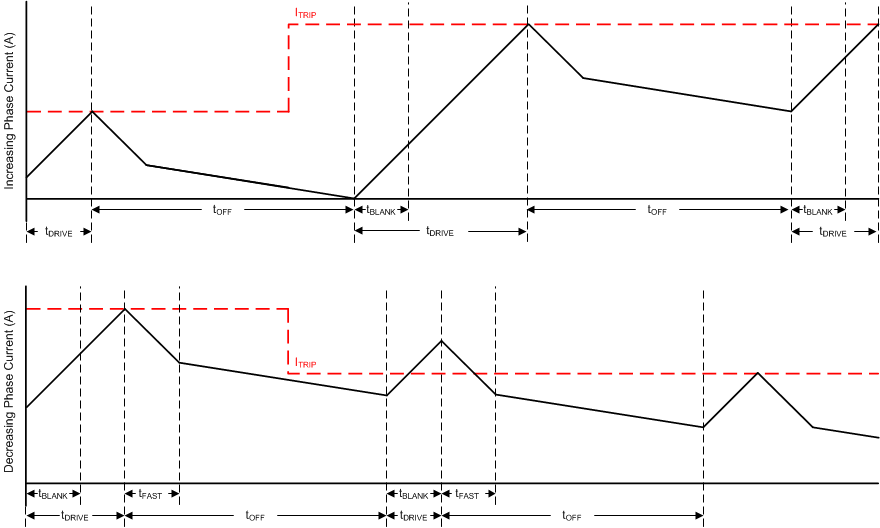ZHCSND1A November 2020 – May 2022 DRV8434
PRODUCTION DATA
- 1 特性
- 2 应用
- 3 说明
- 4 Revision History
- 5 Pin Configuration and Functions
- 6 规格
- 7 详细说明
- 8 Application and Implementation
- 9 Power Supply Recommendations
- 10Layout
- 11Device and Documentation Support
- 12Mechanical, Packaging, and Orderable Information
封装选项
机械数据 (封装 | 引脚)
散热焊盘机械数据 (封装 | 引脚)
- RGE|24
订购信息
7.3.6.3 上升和下降电流阶段均为混合衰减
 图 7-10 混合-混合衰减模式
图 7-10 混合-混合衰减模式混合衰减下,开始的一段时间为快速衰减,然后在剩余的 tOFF 内慢速衰减。在此模式下,上升和下降电流阶跃都会发生混合衰减。
该模式表现出的纹波比慢速衰减大,但比快速衰减小。在下降电流阶跃时,混合衰减可比慢速衰减更快地稳定到新的 ITRIP 电平。
如果电流保持很长时间(STEP 引脚无输入)或步进速度非常慢,则慢速衰减可能无法正确调节电流,因为电机绕组上不存在反电动势。在这种状态下,电机电流上升速度会非常快,需要极长的关断时间。当电机绕组上没有反电动势时,上升或下降混合衰减模式能持续调节电流电平。